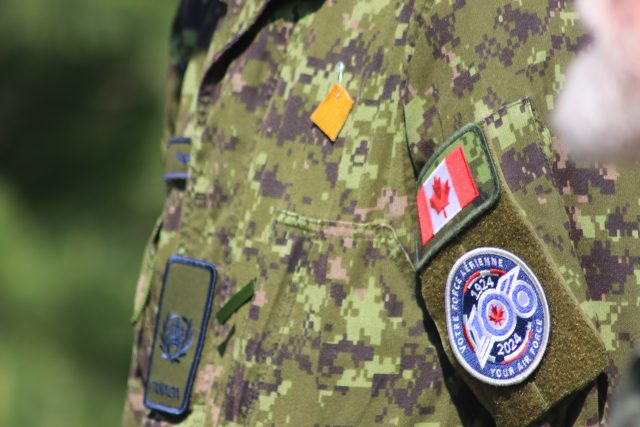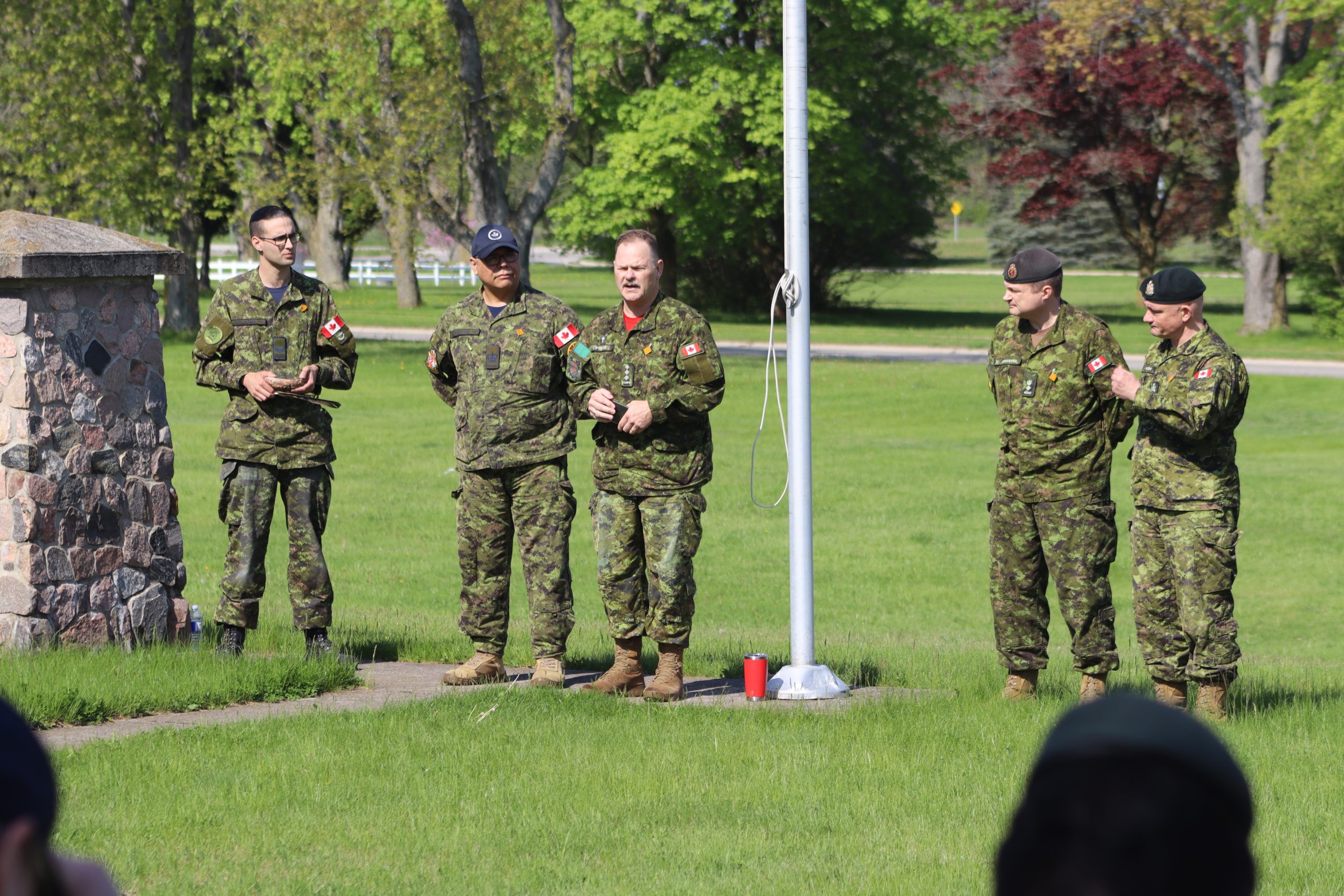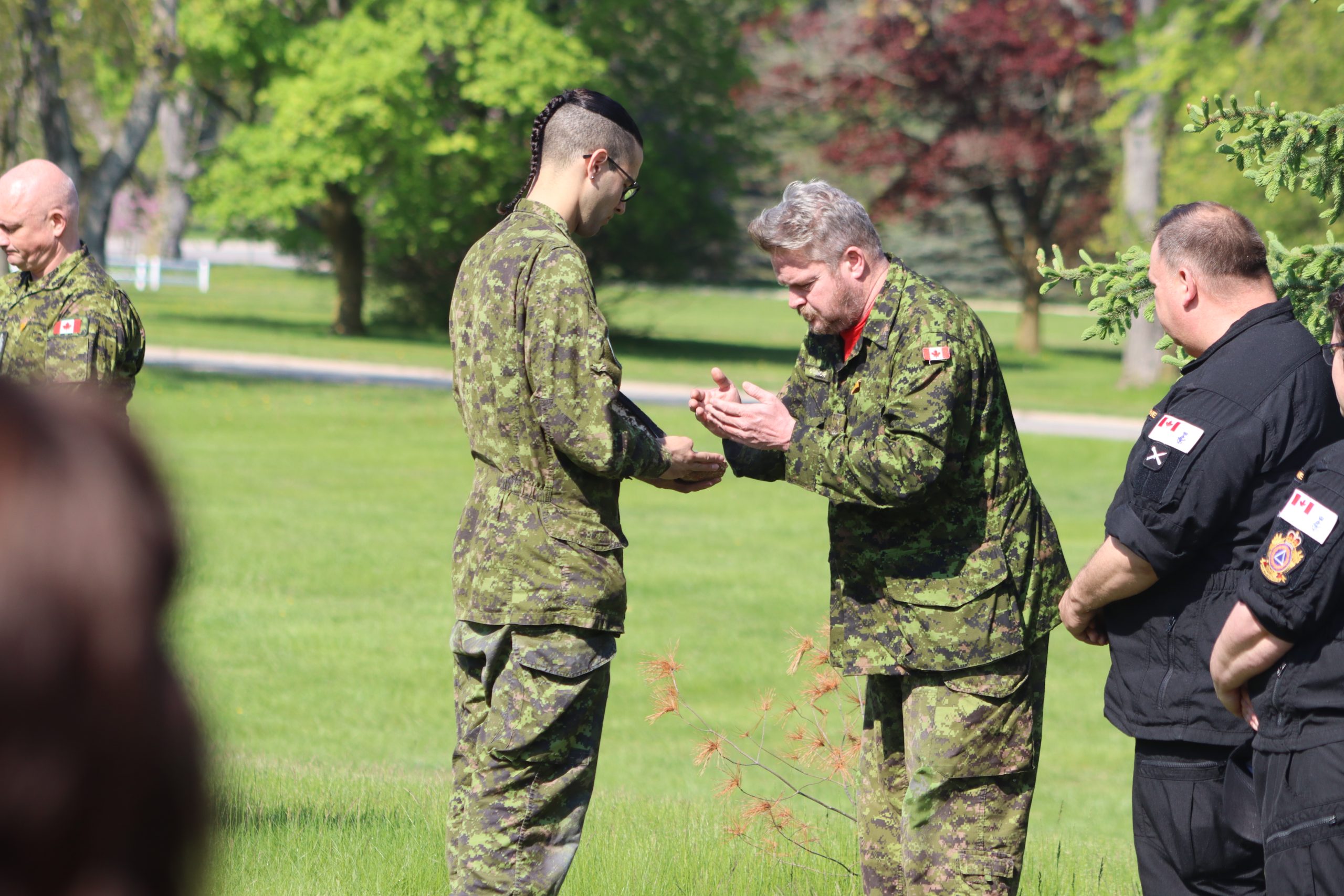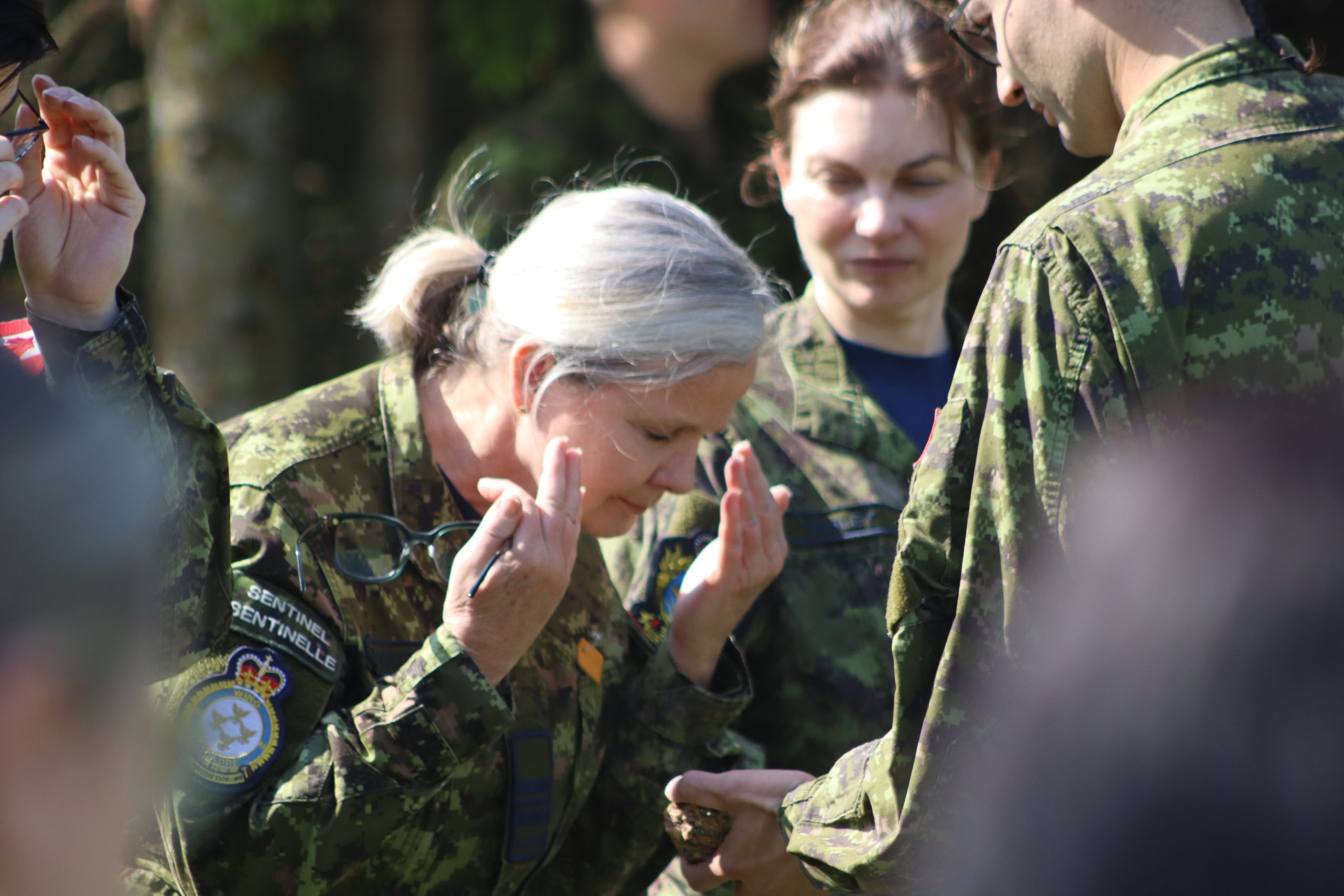
CFB Borden members gathered at 3 CRPG HQ to launch the Moose Hide Campaign
The 3rd Canadian Ranger Patrol Group’s (3CRPG) invited members and guests from the CFB Borden community to launch the Moose Hide Campaign – a British Columbia born, Indigenous led grassroots movement to engage men and boys with ending violence towards women, girls and two-spirited individuals (MMIWG2S).
Between the tepee and flagpole outside of 3CRPG HQ, members formed a circle to take part in a smudging ceremony and reflective moment of silence.
3CRPG Chaplain Captain Michael Bowyer explained what the Moose Hide Campaign is and how CFB Borden can help promote awareness about stopping violence and the MMIWG2S crisis.
“The Highway of Tears [in British Columbia] features many red dresses on display,” said Capt Bowyer, “and it creates awareness as to what has happened in the past, what happens now in the present and what we can do to be a part of truth and reconciliation.”

Since 1970, the Highway of Tears has become a prime location for crimes related to MMIWG2S with over 40 victims having been found near the highway or never found at all.
With the conviction of only three serial killers in relation to these crimes, the crisis continues to weigh on Indigenous and Canadian communities across the country.
Before the moment of silence was held for the MMIWG2S, Chair for the Defense Indigenous Advisory Group (DIAG) Warrant Officer Craig Belliveau provided the origin story behind the Moose Hide Campaign.
“[The Moose Hide Campaign] has since grown into a nation-wide movement of Indigenous and non-Indigenous Canadians, from local communities, First Nations, governments, schools, colleges, universities and police forces,” WO Belliveau said.

Inspired by Indigenous tradition and the Canadian wildlife surrounding their community, the moose hide was chosen in part by father-daughter cofounders Paul and Raven Lacerte who were hunting moose to help feed their family for the winter in 2011. The moose hide was chosen as a symbol of cultural preservation to combat the effects of residential schools on Indigenous practices.
“The cornerstone of the Moose Hide Campaign is the hide pin,” explained WO Belliveau. “Wearing the pin signifies a commitment to honour and protect the women and children in your life and speak out against gender-based and domestic violence. Today, over 4 million moose hide pins have been distributed to communities, schools and workplaces across Canada.”
On behalf of the CFB Borden Command Team, Lieutenant-Colonel Gary Johnston addressed those in attendance by sharing how he was introduced to the Moose Hide Campaign.
“Last year I was in Ottawa and I happened to see someone wearing one of the [moose hide] patches and I asked them, ‘What’s that piece of leather?’,” LCol Johnston said. “He educated me about what the program was and what it represents and today I’m looking around and seeing so many people wearing this patch.”

To find out more about how you can contribute to the Moose Hide Campaign and help eliminate gender-based violence across Canada, click here to read more about the initiatives roots.
“If anyone approaches you and asks what the patch represents… tell them,” LCol Johnston concluded.
By: Caleb Hooper





